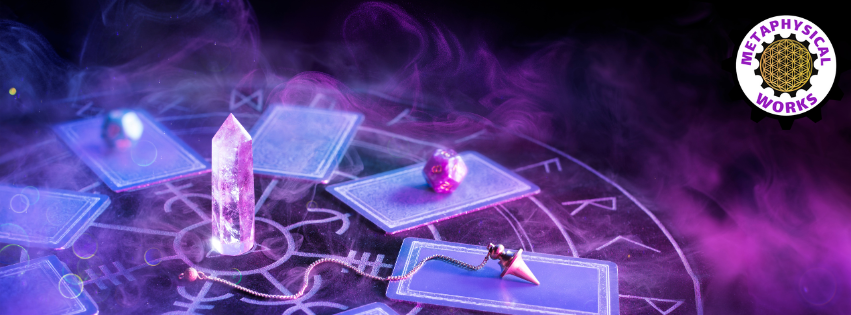Great Wheel: Living the Pagan Cycles of Our Lives & Times
By Shane Hudgins
Jun 27, 2025
Add a comment
In the heart of nature’s rhythms lies a sacred map – one that has guided countless spiritual traditions through the ages. Known as the Wheel of the Year, this cycle of seasonal festivals and earth-based observances offers more than just a calendar; it is a profound path to alignment, healing, and transformation. For modern pagans and spiritual seekers alike, living by the Great Wheel means returning to a way of being that honors both the cycles of nature and the turning points within our own lives.
Whether you’re new to the path or looking to deepen your practice, this guide will introduce the essence of the Great Wheel and how you can live more fully in tune with its ancient wisdom.
What is the Great Wheel?
The Great Wheel – also known as the Wheel of the Year – is a sacred cycle made up of eight festivals that mark the solar and seasonal transitions throughout the year. These festivals are rooted in Celtic, Norse, Wiccan, and broader pagan traditions, but their wisdom is universal: observe the Earth, live in rhythm, and honor the turning tides of light, life, death, and rebirth.
These eight festivals are typically divided into:
- The Four Solar Festivals (Quarter Days):
- Yule (Winter Solstice)
- Ostara (Spring Equinox)
- Litha (Summer Solstice)
- Mabon (Autumn Equinox)
- The Four Fire Festivals (Cross-Quarter Days):
- Imbolc
- Beltane
- Lughnasadh (Lammas)
- Samhain
Each sabbat reflects a unique energetic quality – offering insight into both the outer world and our inner landscape.
Living the Cycles: How the Great Wheel Reflects Our Inner Journey
The power of the Wheel lies in its cyclical nature. As the seasons change, so too do we. The Great Wheel is not just an agricultural or seasonal calendar—it’s a mirror for our spiritual and emotional evolution.
Yule – The Return of Light
Winter Solstice marks the longest night and the rebirth of the sun. Spiritually, this is a time for inner reflection, rest, and hope. It’s the “new moon” of the solar year.
Ask Yourself: What seeds of intention am I quietly nurturing in the dark?
Imbolc – The Spark of New Life
Celebrated in early February, Imbolc whispers of spring’s return. It’s a time of inspiration, purification, and potential – a sacred moment for planning and creative visioning.
Ritual Ideas: Candle lighting, home blessing, or creative journaling.
Ostara – Balance and Blossoming
The Spring Equinox brings equal light and darkness. Ostara represents new growth, harmony, and renewal – both around and within us.
Live It: Begin a new project or nurture your body and spirit with a cleansing ritual.
Beltane – Passion and Fertility
May Day is a celebration of life force, connection, and sensuality. Beltane calls us to honor what is blooming – literally and metaphorically.
Reflection Prompt: Where can I invite more joy and vitality into my life?
Litha – The Height of Power
Summer Solstice is the longest day, representing abundance, radiance, and manifestation. It is a time to celebrate what is flourishing.
Honor It: Give thanks for your blessings or perform a ritual of gratitude under the sun.
Lughnasadh – The First Harvest
In early August, we begin to gather the fruits of our labor. This is a time of gratitude, sharing, and reflection on what we’ve cultivated so far.
Suggestion: Bake bread, share with community, or assess what’s ripening in your goals.
Mabon – The Great Equalizer
The Autumn Equinox returns us to balance once more, inviting us to turn inward as the light wanes. This is a sacred pause for thanksgiving and preparation.
Live the Lesson: Create an altar of harvest items or write a gratitude list.
Samhain – The Veil is Thin
The spiritual new year for many pagans, Samhain (pronounced “sow-in”) is a time to honor ancestors, embrace transformation, and welcome the mystery of death and rebirth.
Ritual Idea: Light a candle for loved ones who’ve passed or do shadow work journaling.
Aligning Your Life with the Wheel
When we live in harmony with the Great Wheel, we become more attuned to the natural ebb and flow of energy in both the world and ourselves. These cycles remind us:
- There’s a time for growth, and a time for rest.
- A time to sow, and a time to release.
- A time to dance in the light, and a time to walk with shadow.
By observing these rhythms, we no longer fight time – we flow with it, becoming co-creators of our own sacred life path.
Final Thoughts: The Wheel is Always Turning
To walk the Wheel is to walk a spiral path – one that deepens with each turn. Whether you're lighting your first candle at Imbolc or preparing an ancestral feast at Samhain, remember: this journey isn’t about perfection – it’s about presence.
Living the Great Wheel reconnects us to the Earth, to Spirit, and to ourselves. Let it be your compass, your calendar, and your teacher.

